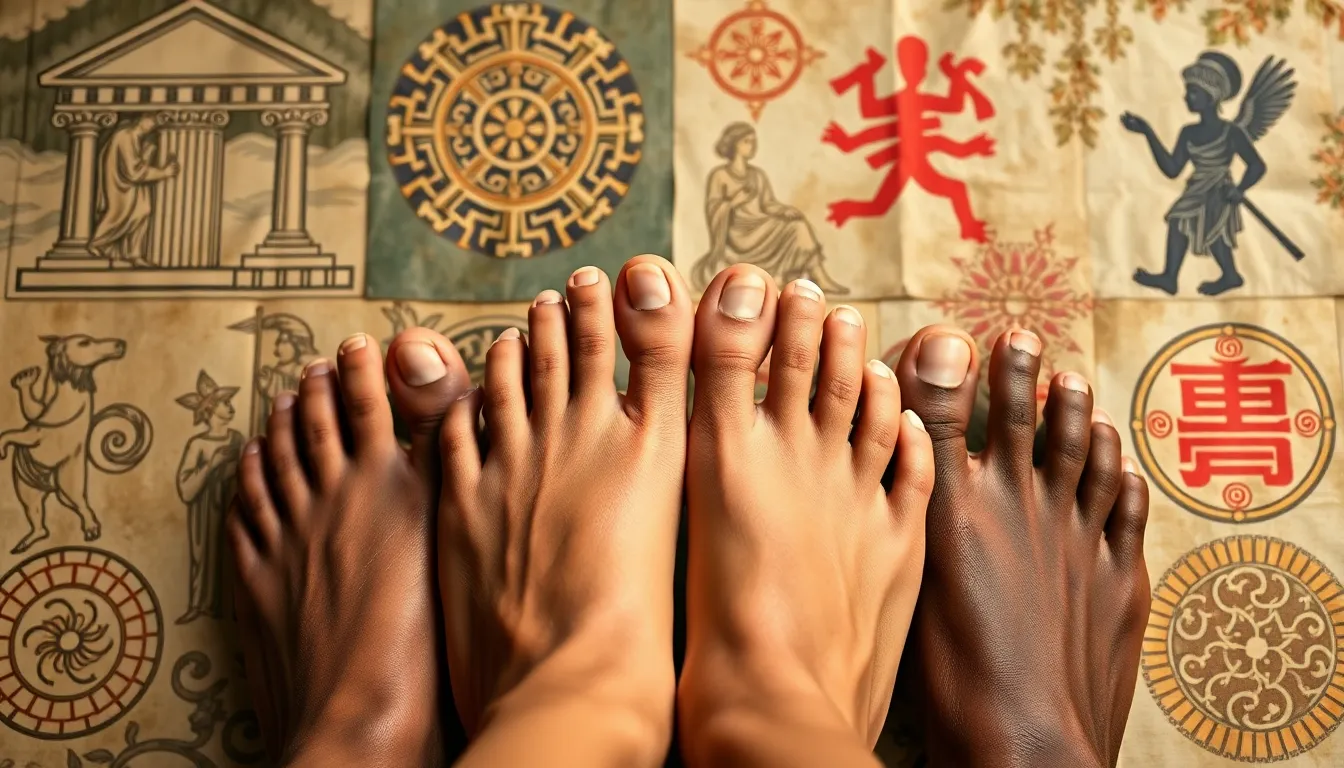Table of Contents
ToggleEver catch a glimpse of your feet and think, “What’s going on down there?” If your second toe is longer than your big toe, you might just be part of an exclusive club with a quirky superstition attached. This unusual toe configuration has sparked laughter, intrigue, and even a bit of mystique throughout history.
Overview of the Superstition
The superstition surrounding a longer second toe than the big toe stems from various cultural beliefs. Many cultures indicate individuals with such a foot shape possess unique personality traits. It’s often associated with creativity, curiosity, and independence.
Beliefs also link this toe configuration to specific life paths. Some suggest that those with a longer second toe enjoy leadership roles. In contrast, others claim it signifies a longing for adventure and exploration.
Historical records reveal even more intriguing connections. Ancient Greeks viewed this foot shape as a sign of intelligence and ambition. Similarly, some Asian cultures regarded it as a marker of good fortune and success.
People expressing curiosity about this phenomenon often seek insight into their personalities. Many consider the second toe as the “money toe,” symbolizing financial prosperity. Those with it longer tend to attract wealth, according to popular folklore.
Various opinions reinforce the idea that these traits come with unique characteristics. Individuals with a longer second toe might exhibit a stronger desire for freedom. Additionally, some attribute artistic skills and a zest for life to this foot trait.
Modern interpretations of the superstition maintain its relevance. While not scientific, the connection holds cultural significance for many. Individuals often reflect on their own experiences, engaging with the concept in a personal way.
Historical Background


The belief in a longer second toe than the big toe carries intriguing historical significance. This particular foot shape has sparked numerous interpretations throughout history.
Origins of the Belief
Ancient cultures played a pivotal role in shaping this belief. Greeks viewed this toe configuration as indicative of intelligence and ambition. Romans associated it with wealth and personal success. As time progressed, various societies began to outline their own interpretations, leading to a diverse tapestry of beliefs surrounding this trait.
Cultural Variations
Cultural perspectives on a longer second toe differ widely. In Asian cultures, people often see it as a symbol of good fortune and prosperity. African traditions may link it to creativity, suggesting those with this trait possess artistic talents. European views frequently emphasize independence and leadership qualities. Each culture contributes unique insights, highlighting how this superstition remains relevant and significant across global contexts.
Interpretations of the Superstition
The superstition surrounding a longer second toe than the big toe features a mix of positive and negative associations within various cultures.
Positive Associations
In many cultures, individuals with a longer second toe are believed to embody creativity and curiosity. Such individuals often exhibit a desire for adventure, making them more open to new experiences. Greeks historically viewed this toe configuration as an indicator of intelligence and ambition, associating it with leadership qualities. Many Asians consider the longer second toe a symbol of good fortune, linking it to financial prosperity. Artistic skills often flourish among individuals with this trait, reinforcing their reputation for originality. Financial success is another attribute tied to this toe shape, where it’s referred to as the “money toe.” Overall, these positive interpretations celebrate the uniqueness of this toe configuration.
Negative Associations
Despite positive views, some cultures express more caution. Individuals with a longer second toe may face interpretations tied to restlessness or unpredictability. Romans linked this configuration to impulsiveness, suggesting an inclination toward reckless behavior. Some societies perceive it as a sign of emotional instability, creating a sense of unease among peers. Certain traditions warn that such individuals can struggle with commitment in relationships due to their adventurous nature. Lastly, these negative associations highlight the complex nature of beliefs surrounding toe shapes. While many celebrate the longer second toe, others caution about the potential challenges it may bring.
Psychological Perspectives
Superstitions about toe shapes influence individual perceptions and behaviors significantly. These beliefs shape self-image, affecting how people view themselves and their identities.
Influence on Self-Image
A longer second toe often correlates with unique self-perceptions. Individuals may believe they possess creativity and ambition based on cultural associations. Many feel empowered by identifying with characteristics linked to this toe shape. Some even choose to embrace these beliefs, considering them part of their identity. Confidence can increase when individuals align their self-image with the traits attributed to their toe configuration. This connection to cultural beliefs instills a sense of belonging in different communities that celebrate these characteristics.
Impact on Behavior
Behaviors often reflect the personality traits associated with a longer second toe. Creative pursuits may attract individuals who identify with these traits. Adventure and risk-taking behaviors frequently emerge among those who resonate with the notion of having a “money toe.” Leadership roles often appeal to these individuals, aligning with historical beliefs regarding ambition. Choices in relationships may also be influenced by these superstitions, as some may feel restlessness related to this toe shape. Enhanced self-exploration and artistic expression commonly find their roots in these beliefs, prompting individuals to pursue interests that reflect their identities.
The superstition surrounding a longer second toe offers a fascinating glimpse into how physical traits can influence perceptions and beliefs. This unique toe configuration is tied to various cultural interpretations that celebrate creativity and ambition while also cautioning against potential restlessness.
Individuals with this trait often find themselves resonating with the positive attributes associated with their toe shape, embracing their adventurous spirit and leadership qualities. The interplay between these beliefs and personal identity highlights the enduring impact of cultural narratives on individual lives.
Ultimately, whether seen as a marker of good fortune or a symbol of emotional complexity, the longer second toe continues to spark curiosity and intrigue across different societies.







